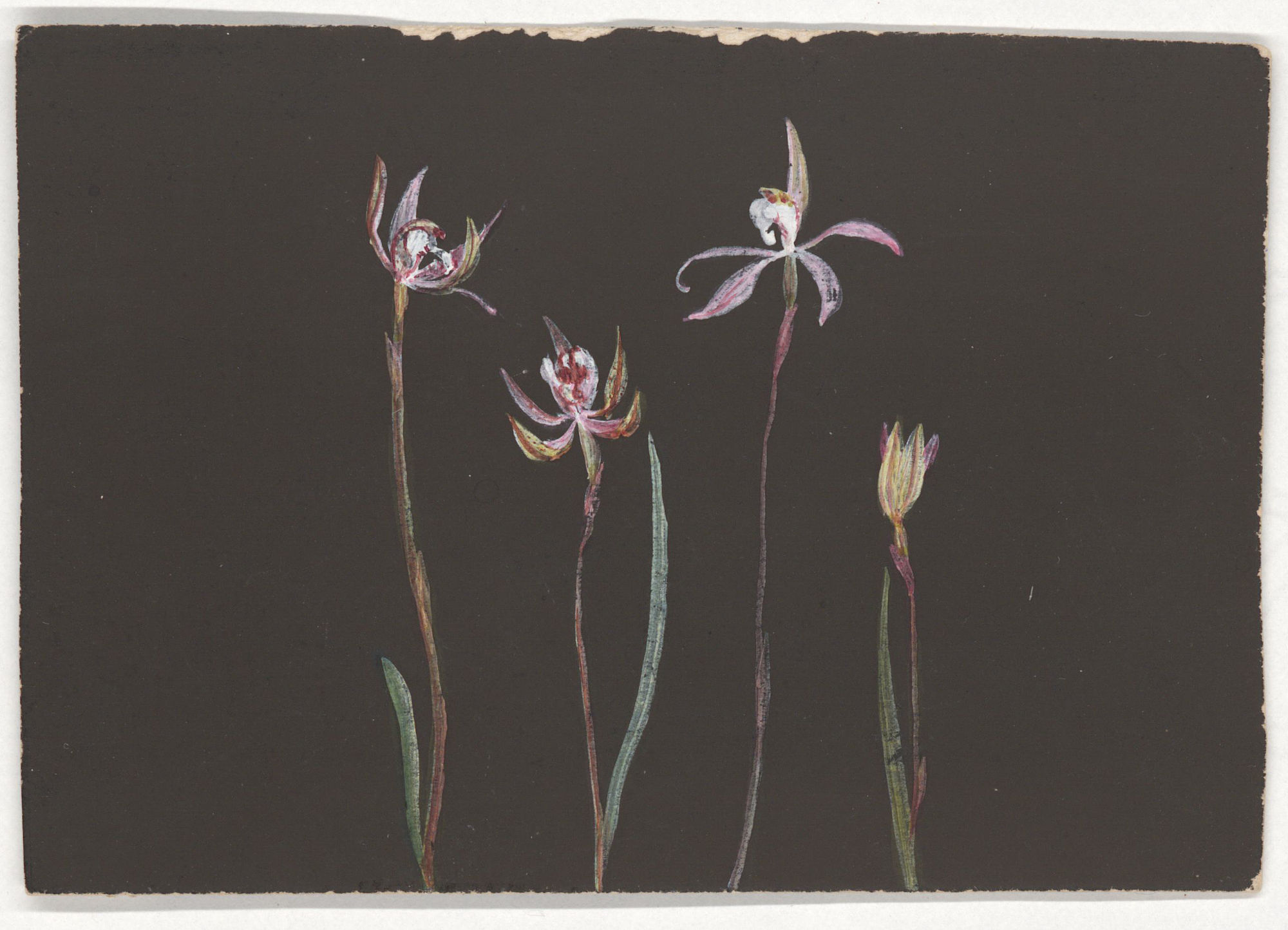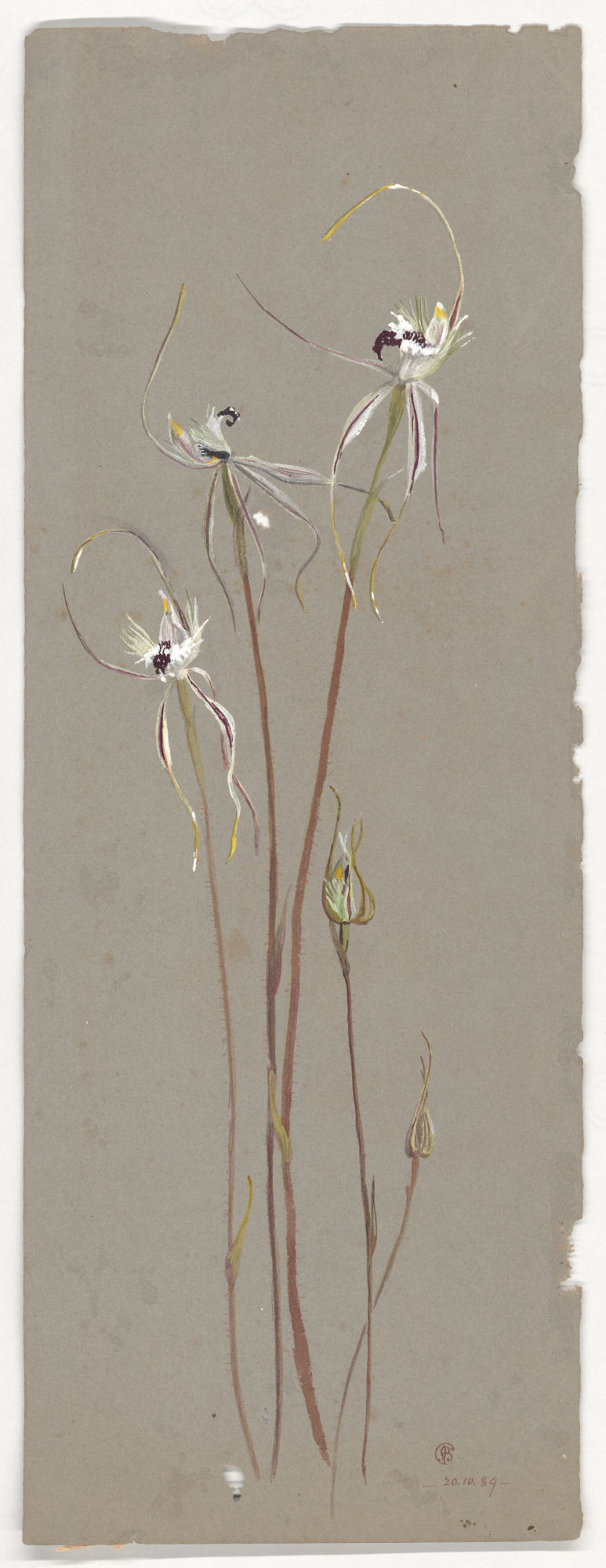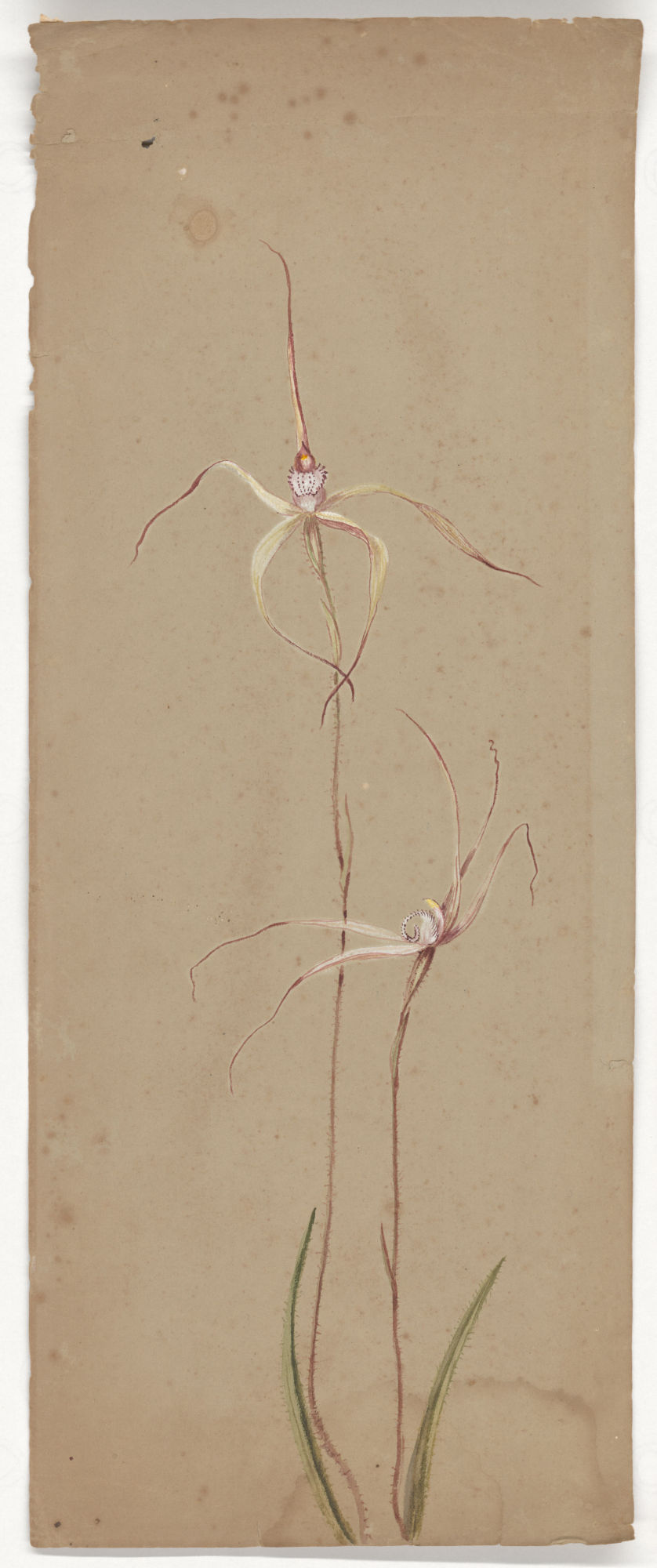Reflections on orchids in the field and in the CAM collection
Flowering season is well underway in the forests and bush around Castlemaine and will continue until early summer. In this reflection, naturalist George Broadway is inspired by three watercolours in the collection. Through CAM’s Digitisation Roadshow project, we are now able to share these beautifully observed orchid studies by local artist Alice Cherry (nee Brotherton,1861–1898), possibly the elder sister of Miss Winnie Brotherton. A gifted amateur poet and painter, Cherry was the first woman elected to the prestigious Buonarotti Club in 1883. This Melbourne-based club for professional artists was important in advancing the careers of many female artists, including May Vale, also represented in the CAM collection (see Stephen F Mead). Here, George Broadway invites us to venture into the field and explore Castlemaine’s magnificent wildflowers.

One of the frustrations of the COVID restrictions has been the inability of local environmentally based groups to venture into the bush as a group. As this has been an especially good season with a reasonable amount of rainfall, many people are wishing to see the delightful wildflower display.
Groups I have been associated with have all had to restrict their activities—the Taradale Walking Group, Friends of the Box-Ironbark Forests and the Field Naturalists. However, this does not preclude individual members and other citizens from venturing forth in search of the floral delights to be found at present in the forests around Castlemaine.

Driving along one of the bush tracks, many flowers may be spotted from the car—grevilleas, acacias, blue waxlip orchids (known locally as “old boys orchids”), white wax flowers, yellow/red gorse bitter pea and yellow yam daisies to name but a few. On foot, many more may be seen, such as the early nancy, nodding greenhood orchid and yellow golden moth orchids.
Acacias or Wattles have also been spectacular this year, lightening the grey greens of the eucalyptus forests with their colour. It is always fascinating to see the different shades of yellow produced by various types of the genus – beginning in autumn with the pale yellow of the Prickly Spreading Wattle, followed by the brilliant gold of the Golden Wattle, and then the various shades of the Silver, Woolly, Rough and Gold-dust wattles. One might also include the Cootamundra Wattle, which makes a spectacular display in late winter, but is not indigenous to this area, and is considered by many to be a weed. Amid the yellow of the wattles may often be seen the deep purple/blue blooms of Hardenbergia violacea, the Purple Coral-pea providing a delightful contrast

Alice Cherry’s watercolors from around 1890 depict spider orchids of the genus Caladenia (although there has been a recent move to rename some of the genus Arachnorchis, reflecting the common name). One of them, Caladenia patersonii, Paterson’s spider orchid, would have been painted elsewhere, as it does not occur locally, but in Eastern coastal Victoria. The other two are both known locally: Caladenia phaoeclavia, the brown-clubbed spider orchid, is relatively common; Caladenia fuscata, dusky fingers, is less common and may be confused with the common pink fingers, Caladenia carnea. Photographs of all of these orchids are easily found online; viewers can decide for themselves if Cherry’s flower studies here have been correctly identified.
Mount Alexander Shire Council has gathered the resources you need to plan a fieldtrip and be inspired by Castlemaine’s local orchids and other wildflowers, here. For those who would like to find the living treasures but who feel that they lack knowledge, the Castlemaine Field Naturalists have produced a brochure available from the Visitor Information Centre or online here, which has coloured photographs of most of the wildflowers one may encounter. It must be remembered, of course, that not all bloom at the same time; some, like the early nancy, flower early in the season, unlike the spider orchid, which appears later.
Let us hope that we will be able to visit CAM again in the near future so that we can view these and the other treasures. In the meantime, we can visit the bush (as the rules allow) and enjoy our orchids in the wild.
George Broadway
September 2020
Driving along one of the bush tracks, many flowers may be spotted from the car—grevilleas, acacias, blue waxlip orchids (known locally as “old boys orchids”), white wax flowers, yellow/red gorse bitter pea and yellow yam daisies to name but a few. On foot, many more may be seen, such as the early nancy, nodding greenhood orchid and yellow golden moth orchids. Acacias or Wattles have also been spectacular this year, lightening the grey greens of the eucalyptus forests with their colour. It is always fascinating to see the different shades of yellow produced by various types of the genus – beginning in autumn with the pale yellow of the Prickly Spreading Wattle, followed by the brilliant gold of the Golden Wattle, and then the various shades of the Silver, Woolly, Rough and Gold-dust wattles. One might also include the Cootamundra Wattle, which makes a spectacular display in late winter, but is not indigenous to this area, and is considered by many to be a weed. Amid the yellow of the wattles may often be seen the deep purple/blue blooms of Hardenbergia violacea, the Purple Coral-pea providing a delightful contrast.